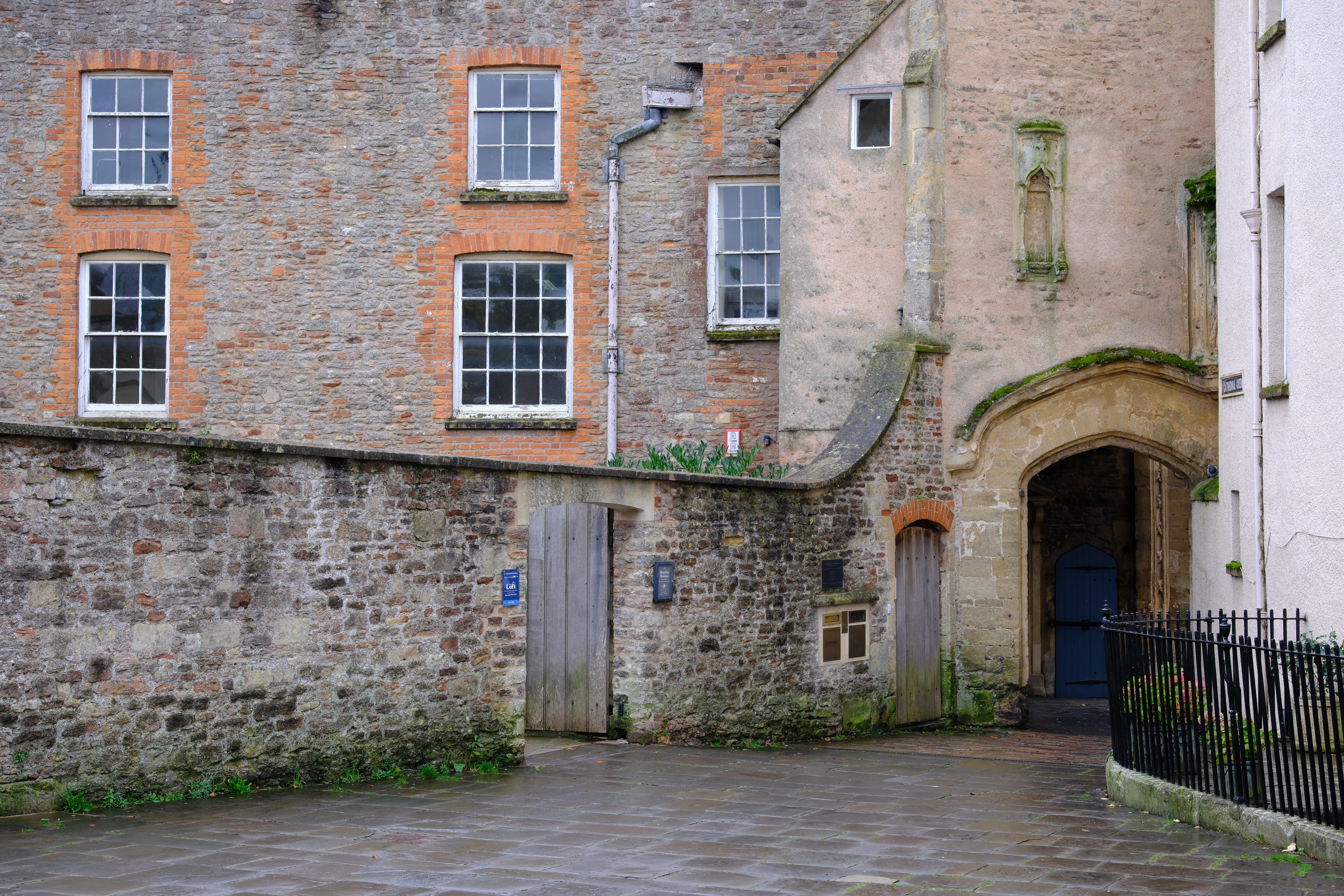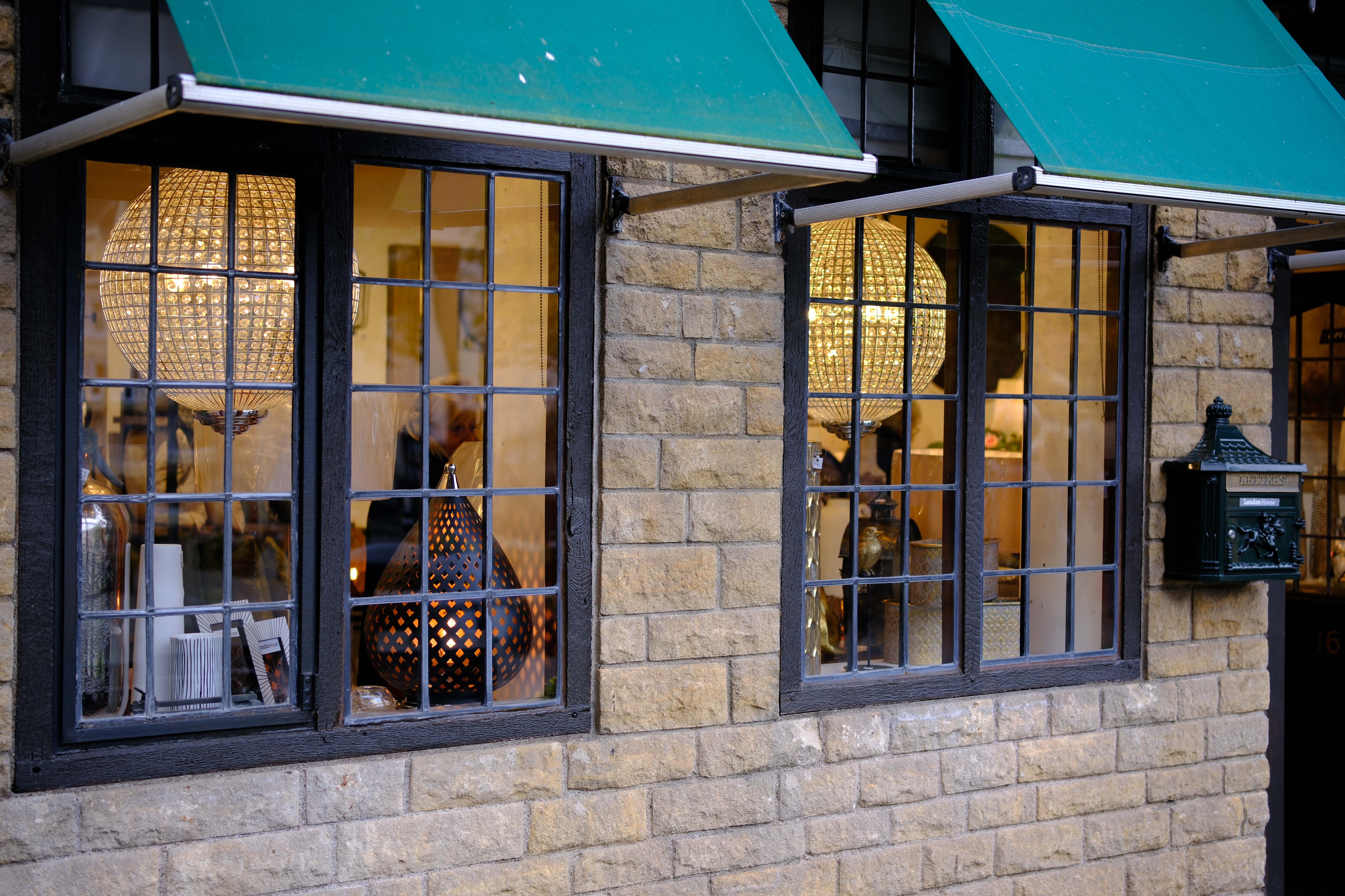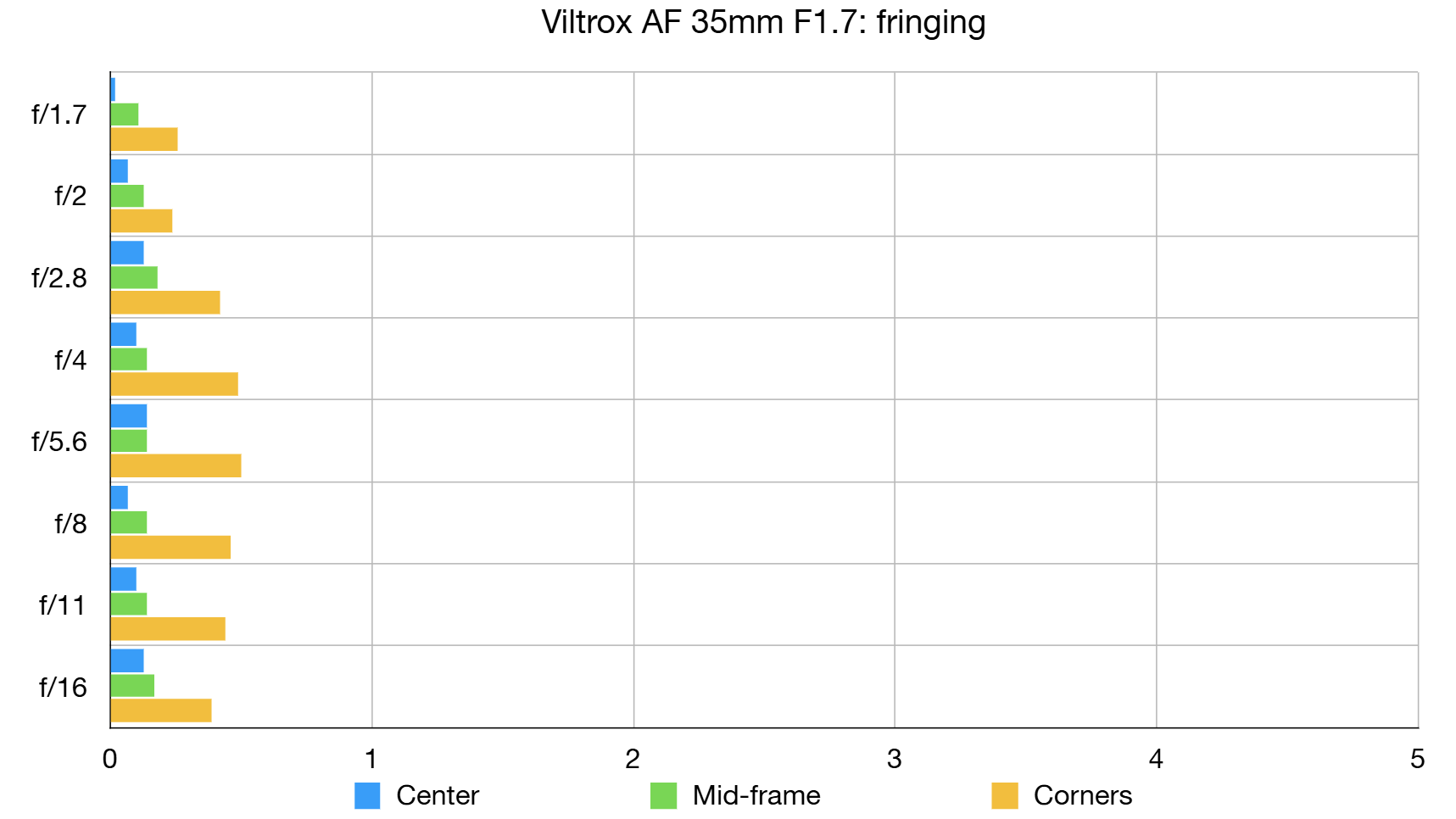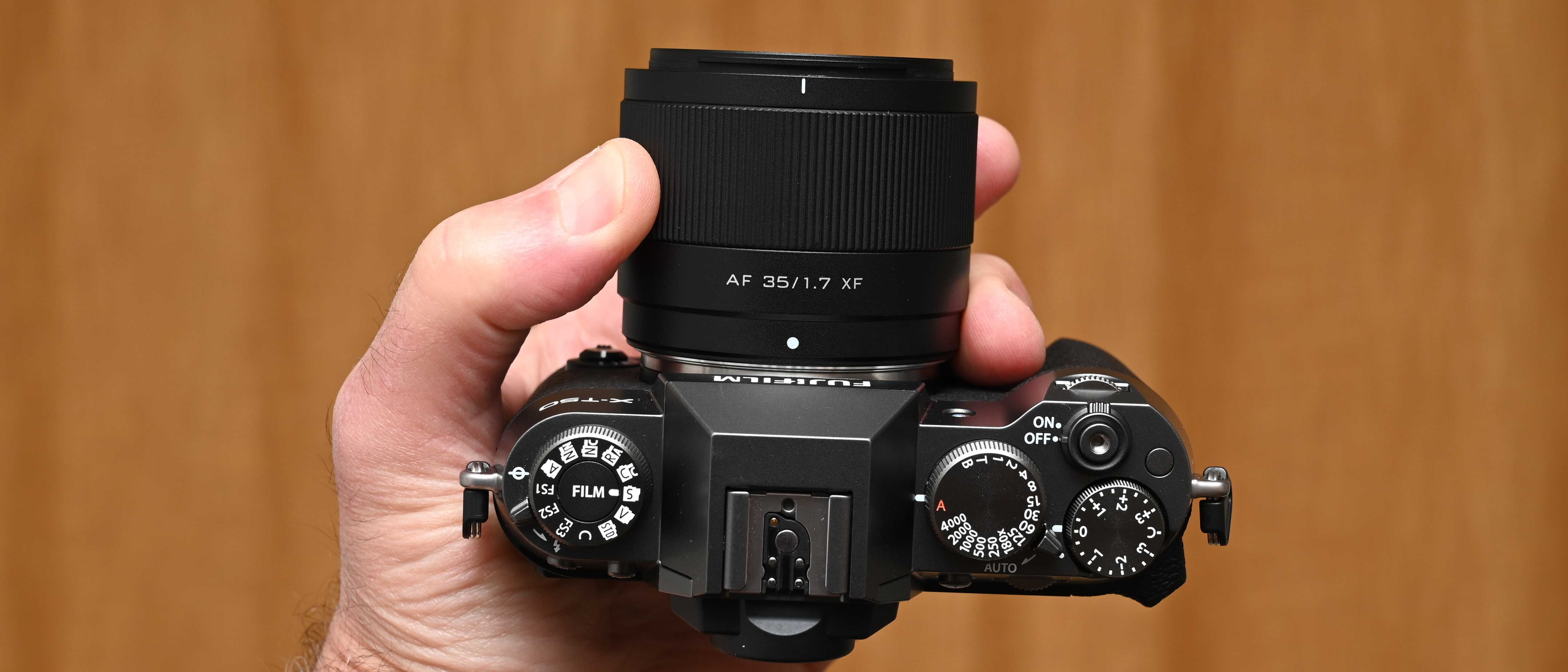Digital Camera World Verdict
I do like a fast lens and this Viltrox AF 35mm F1.7 Air certainly isn’t lacking in speed, both in terms of aperture rating and autofocus performance. I like it even better for combining really nice image quality with solid build quality, at an incredibly low price. All in all, there’s a lot to like here.
Pros
- +
Compact and lightweight
- +
Impressive all-round performance
- +
Metal mounting plate with USB-C port
- +
Cost-cutting price tag
Cons
- -
No AF/MF focus mode switch
- -
No aperture control ring
- -
Not as fast as Viltrox f/1.4 primes
Why you can trust Digital Camera World
I’m sold on the fact that Viltrox can make very respectable lenses to suit a tight budget, and I’m speaking from experience. A couple of years ago I put my money where my mouth was and bought all three of the compact yet fast, APS-C format metal-bodied Viltrox AF 23mm F1.4 Z, Viltrox AF 33mm F1.4 Z, and Viltrox AF 56mm F1.4 Z primes, plus the slightly larger Viltrox AF 13mm F1.4 Z and the faster Viltrox AF 27mm F1.2 Pro, both of which are also metal-bodied. They work a treat on my Nikon Z fc and continue to impress me every time I use them. This newer AF 35mm f/1.7 lens ditches the aperture ring, which I’d generally only use for shooting video, has a plastic rather than metal body (but still a metal mounting plate) and has an aperture rating that’s half an f/stop slower than the f/1.4 lenses. That results in an even cheaper purchase price and, as such, the new 35mm F/1.7 lens follows in the footsteps of the Viltrox AF 56mm F1.7, which I reviewed a few months previously. Whereas the 56mm lens has a portrait-friendly ‘effective’ 84mm focal length in full-frame terms, the 35mm equates to 52.5mm, giving an entirely natural field of view. I tested the XF version of the new 35mm lens on a Fujifilm X-T50 camera and, indeed, the lens aims to be a perfect fit for the best Fujifilm cameras as well as taking on the best Fujifilm lenses. If it follows suit with previous Viltrox launches, Nikon Z and Sony E mount versions will also be available.

{Product Name}: Specifications
| Mount options | Fujifilm X, Nikon Z, Sony E |
| Lens construction | 11 elements in 9 groups |
| Angle of view | 45 degrees |
| Diaphragm blades | 9 |
| Minimum aperture | f/16 |
| Minimum focus distance | 0.33m |
| Maximum magnification | 0.13x |
| Filter size | 52mm |
| Dimensions | 64x55mm |
| Weight | 170g |
Viltrox AF 35mm F1.7: Price
There’s no denying that the original trilogy of Viltrox AF 23mm, 33mm and 56mm F1.4 lenses are exceptional value at around $299/£249 each. Like the more recent AF 56mm F1.7 lens launched in 2024 the 35mm costs even less to buy at around $110/£90. It’s available from Viltrox’s international online store, and from a growing range of independent photographic retailers around the world. For the sake of further comparison, the closest own-brand Fujifilm lens is the XF 35mm F2 R WR, which retails at $399/£389, but features weather-seals and an aperture control ring, although with a slightly slower aperture rating.
Viltrox AF 35mm F1.7: Design & Handling
The Viltrox AF 35mm F1.7 adheres to the ‘keep it simple’ principle. Compared with some Viltrox lenses that spout an aperture control ring, customizable function buttons and even a color LCD info display, this one looks slim pickings. And it really is slim and lightweight which, as far as I’m concerned, add to the attraction for use on slinky APS-C format mirrorless cameras. So yes, keeping it simple, the lens doesn’t give much for your left hand to play with, apart from an electronically coupled manual focus ring, linked to the now common stepping motor breed of autofocus motor.

With hybrid stills and video shooting in the ascendency, the choice of a stepping motor for autofocus is entirely natural. It delivers fast performance for stills while enabling smooth and near-silent focus transitions when shooting video. Autofocus is the go-to mode for most of us but the large and grippy manual focus ring enables smooth and very precise adjustments, if you feel the need.

The barrel of the lens is made from high-quality plastic but, unlike in some lightweight, budget-friendly lenses, the Viltrox retains a metal mounting plate. Not only that, but the mounting plate includes gold-plated electronic contacts and a USB-C port for applying firmware updates. It’s a plus point for independently manufactured lenses, helping to maintain compatibility if camera manufacturers throw any curveballs when bringing out new models. You can’t expect the best of everything at this sort of purchase price and one omission is that there’s no rubber weather-seal gasket on the mounting plate. That’s hardly surprising.

Although small, the lens feels well built. A telltale sign of its compactness is that the filter attachment thread has a downsized 52mm diameter. And while it looks fairly basic, the lens isn’t bereft of extras. Unlike many own-brand budget lenses from camera manufacturers, it comes complete with a petal-shaped, bayonet-fit hood and a nice little carrying pouch.

The optical path is impressive for a lens at this price point, featuring 11 elements in 9 groups and including one aspherical element, one ED (Extra-low Dispersion) element and two HRI (High Refractive Index) elements.

Viltrox AF 35mm F1.7: Performance
As I’ve mentioned, I tested the lens on a Fujifilm X-T50 camera. I’m mentioning again because this body has an unusually high megapixel count for an APS-C format camera, featuring a 40.2MP image sensor. That puts big demands on the resolving power of lenses, and is a major challenge for such a relatively inexpensive prime as the Viltrox 35mm. As it turns out, I was very impressed with the sharpness and clarity of the lens in real-world testing, right out to the edges and corners of the image frame, even when shooting wide-open at f/1.7.

Along with impressive sharpness, the f/1.7 aperture enables a fairly tight depth of field, especially for close-ups, which brings the quality of bokeh into the equation. Again, I was pleased that the lens gives a nice, smooth appearance to defocused areas within images.

As is generally the way nowadays, the lens takes advantage of automatic in-camera correction for distortion. The same applies to own-brand Fujifilm X-mount lens that I’ve used over the years, as well as lenses made by other camera manufacturers for their mirrorless bodies. Even so, there proved little correction necessary in our tests when processing RAW files and disabling correction, with only very slight pincushion being in evidence.

Automatic correction is also available for color fringing but when disabling this, fringing remains very minimal, even out at the edges and corners of the image frame, where it can often be a problem.

Viltrox AF 35mm F1.7: Sample Images
This gallery of example shots was taken in the UK’s Somerset city of Wells. The Fujifilm X-T50 camera and Viltrox lens team up to deliver punchy image quality despite very gloomy, overcast weather. The interior shots were taken at Wells Cathedral.

EXIF: Fujifilm X-T50 + Viltrox AF 35mm F1.7 (1/105 sec, f/5.6, ISO 160)

EXIF: Fujifilm X-T50 + Viltrox AF 35mm F1.7 (1/105 sec, f/5.6, ISO 400)

EXIF: Fujifilm X-T50 + Viltrox AF 35mm F1.7 (1/4 sec, f/5.6, ISO 800)

EXIF: Fujifilm X-T50 + Viltrox AF 35mm F1.7 (1/4 sec, f/5.6, ISO 800)

EXIF: Fujifilm X-T50 + Viltrox AF 35mm F1.7 (1/3 sec, f/5.6, ISO 800)

EXIF: Fujifilm X-T50 + Viltrox AF 35mm F1.7 (1/8 sec, f/5.6, ISO 800)

EXIF: Fujifilm X-T50 + Viltrox AF 35mm F1.7 (1/15 sec, f/5.6, ISO 800)

EXIF: Fujifilm X-T50 + Viltrox AF 35mm F1.7 (1/2900 sec, f/1.7, ISO 8000)

EXIF: Fujifilm X-T50 + Viltrox AF 35mm F1.7 (1/125 sec, f/2, ISO 125)

EXIF: Fujifilm X-T50 + Viltrox AF 35mm F1.7 (1/120 sec, f/2, ISO 125)

EXIF: Fujifilm X-T50 + Viltrox AF 35mm F1.7 (1/200 sec, f/2.8, ISO 200)

EXIF: Fujifilm X-T50 + Viltrox AF 35mm F1.7 (1/105 sec, f/5.6, ISO 320)

EXIF: Fujifilm X-T50 + Viltrox AF 35mm F1.7 (1/105 sec, f/5.6, ISO 640)

EXIF: Fujifilm X-T50 + Viltrox AF 35mm F1.7 (1/105 sec, f/1.7, ISO 200)

EXIF: Fujifilm X-T50 + Viltrox AF 35mm F1.7 (1/200 sec, f/1.7, ISO 125)

EXIF: Fujifilm X-T50 + Viltrox AF 35mm F1.7 (1/10 sec, f/5.6, ISO 80)

EXIF: Fujifilm X-T50 + Viltrox AF 35mm F1.7 (1/25 sec, f/5.6, ISO 80)

EXIF: Fujifilm X-T50 + Viltrox AF 35mm F1.7 (1/30 sec, f/5.6, ISO 80)
Viltrox AF 35mm F1.7: Lab Results
We run a range of lab tests under controlled conditions, using the Imatest Master testing suite. Photos of test charts are taken across the range of apertures and zooms (where available), then analyzed for sharpness, distortion and chromatic aberrations.
We use Imatest SFR (spatial frequency response) charts and analysis software to plot lens resolution at the center of the image frame, corners and mid-point distances, across the range of aperture settings and, with zoom lenses, at four different focal lengths. The tests also measure distortion and color fringing (chromatic aberration).
Sharpness

Levels of center-sharpness are excellent even when shooting wide-open at f/1.7, and remain impressive out to the extreme edges and corners of the image frame. Right across the frame when lab-testing the lens on Fujifilm X-T50, the Viltrox outperformed the own-brand Fujifilm XF35mm F2 R WR for sharpness.
Fringing:

Color fringing is negligible, even at the corners and edges of the image frame, where lateral chromatic aberration can be problematic.
Distortion: 0.61
There’s a touch of pincushion distortion revealed in our lab tests when processing RAW files and disabling automatic correction, but it’s of a very low order and is generally unnoticeable in real-world shooting.
Viltrox AF 35mm F1.7: Verdict
The Viltrox AF 35mm F1.7 XF ticks a lot of boxes on my wish list for an APS-C format standard prime lens. It’s refreshingly compact and lightweight, has a fairly fast f/1.7 aperture rating, speedy yet smooth autofocus performance and delivers very pleasing image quality. I’m not so keen on the lack of an AF/MF focus mode switch, which saves time and effort compared with rummaging around camera menus, and I miss not having an aperture control ring when shooting video. Even so, I think this Viltrox is a great little lens that’s very easy to live with and a real steal at the price.
| Features | The lens comes with caps, hood and pouch but lacks an AF/MF focus mode switch. | ★★★★ |
| Design | It’s designed with simplicity and cost-cutting in mind, so there’s no aperture control ring. | ★★★★ |
| Performance | The little Viltrox lens punches above its diminutive weight with good performance and image quality. | ★★★★ |
| Value | For a lens that’s simple to use yet delivers impressive image quality, it’s outstanding value for money. | ★★★★★ |

Should you buy the Viltrox AF 35mm F1.7?
✅ Buy this...
- You want a fairly fast prime lens for your APS-C format camera that’s equivalent to using a 50mm ‘standard’ prime on a full-frame camera, giving a very natural perspective.
- You’d rather keep costs down, and don’t mind the lack of relatively advanced features and handling exotica.
🚫 Don't buy this...
- You’d rather spend more on a lens that includes the likes of an AF/MF focus mode switch, aperture control ring and customizable function buttons.
- You’d prefer a faster aperture than f/1.7, more ideal for gaining a tighter depth of field and faster shutter speeds.
Alternatives
The Viltrox AF 33mm F1.4 is also available for Fujifilm X, Nikon Z and Sony E mount APS-C format mirrorless cameras, selling for around $299/£249. As well as having a faster aperture rating, it also has a de-clicked aperture control ring, ideal for shooting video.
The Fujifilm XF35mm F2 R WR is a fairly close competitor to the XF version of the Viltrox lens that I’m reviewing here. It costs around $399/£389, so it’s quite a lot pricier despite having a slightly slower aperture rating, but features weather-seals and an aperture control ring.
Matthew Richards is a photographer and journalist who has spent years using and reviewing all manner of photo gear. He is Digital Camera World's principal lens reviewer – and has tested more primes and zooms than most people have had hot dinners!
His expertise with equipment doesn’t end there, though. He is also an encyclopedia when it comes to all manner of cameras, camera holsters and bags, flashguns, tripods and heads, printers, papers and inks, and just about anything imaging-related.
In an earlier life he was a broadcast engineer at the BBC, as well as a former editor of PC Guide.




